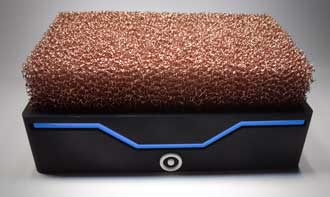 For years the most basic method of super security for a computer was to unplug it from the network or internet.
For years the most basic method of super security for a computer was to unplug it from the network or internet.
However a team of security experts from Ben-Gurion University of the Negev (BGU) have discovered a new method to breach air-gapped computer systems.
Dubbed “BitWhisper” the hack enables two-way communications between adjacent, unconnected PC computers using heat.
According to a paper penned by Mordechai Guri, computers and networks are air-gapped when they need to be kept highly secure and isolated from unsecured networks, such as the public Internet or an unsecured local area network. Typically, air-gapped computers are used in financial transactions, mission critical tasks or military applications.
According to the researchers, “The scenario is prevalent in many organisations where there are two computers on a single desk, one connected to the internal network and the other one connected to the Internet. BitWhisper can be used to steal small chunks of data (e.g. passwords) and for command and control.”
BGU’s BitWhisper bridges the air-gap between the two computers, approximately 15 inches (40 cm) apart that are infected with malware by using their heat emissions and built-in thermal sensors to communicate. It establishes a covert, bi-directional channel by emitting heat from one PC to the other in a controlled manner.
By regulating the heat patterns, binary data is turned into thermal signals. In turn, the adjacent PC uses its built-in thermal sensors to measure the environmental changes. These changes are then sampled, processed, and converted into data.
“These properties enable the attacker to hack information from inside an air-gapped network, as well as transmit commands to it… Only eight signals per hour are sufficient to steal sensitive information such as passwords or secret keys. No additional hardware or software is required. Furthermore, the attacker can use BitWhisper to directly control malware actions inside the network and receive feedback.”







